In North Florida, gardeners have the opportunity to grow a wide variety of crops throughout the year. However, when it comes to planting cucumbers, timing is everything. Knowing when to plant cucumbers in North Florida can make all the difference in the success of your harvest.
The best time to plant cucumbers in North Florida is from February to April. During this time, the soil is warm enough to encourage germination without being too hot to damage the seedlings.
Planting earlier than February can be risky as the soil may still be too cool, while planting later than April can result in a poor harvest due to the onset of hot summer temperatures.
It’s important to keep in mind that planting times can vary depending on your specific location in North Florida. Factors such as climate, soil type, and elevation can all impact the optimal planting window for cucumbers.
By understanding the cucumber planting seasons in Florida, you can ensure that you’re planting at the right time for your area.
Key Takeaways
- The best time to plant cucumbers in North Florida is from February to April.
- Planting earlier than February or later than April can result in a poor harvest.
- Factors such as climate, soil type, and elevation can impact the optimal planting window for cucumbers.
Check out these other popular posts:
- When to Plant Cucumbers in Central Florida?
- When to Plant Grass Seed in Idaho?
- When to Plant Black Seeded Simpson Lettuce?
Understanding the Cucumber Planting Seasons in Florida
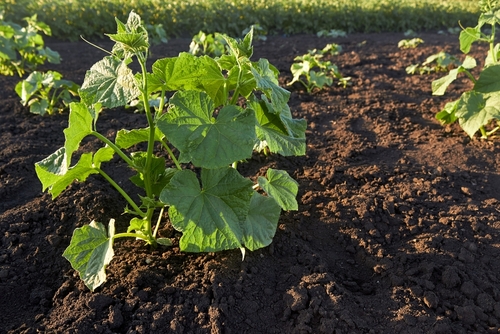
Cucumbers are a warm-season crop that thrives in warm temperatures and plenty of sunshine. As such, planting cucumbers in Florida can be a bit tricky due to its unique weather patterns. Florida is divided into three regions: North Florida, Central Florida, and South Florida. Each region has its own unique climate and planting seasons.
1. North Florida
North Florida has a subtropical climate that is characterized by mild winters and hot summers. Gardeners in North Florida can plant cucumbers from February to April and again in August.
The planting calendar for North Florida generally falls in the spring and fall seasons. Gardeners should avoid planting cucumbers during the winter months as frost and freeze can damage the plants.
2. Central Florida
Central Florida has a humid subtropical climate that is characterized by hot summers and mild winters. Gardeners in Central Florida can plant cucumbers from January to March and again in September.
The planting calendar for Central Florida generally falls in the spring and fall seasons. Gardeners should avoid planting cucumbers during the winter months as frost and freeze can damage the plants.
3. South Florida
South Florida has a tropical climate that is characterized by hot and humid summers and mild winters. Gardeners in South Florida can plant cucumbers from September to February.
The planting calendar for South Florida generally falls in the fall and winter seasons. Gardeners should avoid planting cucumbers during the summer months as excessive warmth and humidity leave them susceptible to many diseases.
When planting cucumbers in Florida, it is important to pay attention to the weather patterns and temperature requirements for germination and optimal growth.
Gardeners should also consider the variety of cucumbers they want to plant. Recommended varieties for Florida include ‘Sweet Success’, ‘Poinsett’, ‘Ashley’, and ‘MarketMore 76’.
Choosing the Right Cucumber Varieties
When it comes to selecting the right cucumber varieties to plant in North Florida, there are a few factors to consider. The right variety can make a significant difference in the yield and quality of the cucumbers you grow. The following cucumber varieties are some of the best for growing in North Florida:
- Eureka: This variety is known for its disease resistance and is a good choice for beginners. It produces medium-sized cucumbers that are great for pickling or eating fresh.
- Sweet Success: This variety is known for its sweet flavor and crisp texture. It produces long, slender cucumbers that are perfect for salads.
- Straight Eight: This variety is a classic cucumber that produces straight, dark green fruits with a smooth skin. It is a good all-purpose cucumber that can be used for slicing, pickling, or eating fresh.
- Poinsett: This variety is a good choice for those who want to grow cucumbers in containers. It produces small, compact plants that are perfect for small gardens or patio containers.
- Ashley: This variety is known for its disease resistance and high yield. It produces long, slender cucumbers that are perfect for salads or pickling.
- Marketmore 76: This variety is a popular choice for home gardeners because of its disease resistance and high yield. It produces dark green cucumbers that are great for slicing or eating fresh.
- Space Master: This variety is a good choice for those who have limited garden space. It produces compact plants that are perfect for small gardens or containers.
- Boston Pickling: This variety is a popular choice for those who want to make pickles. It produces small, firm cucumbers that are perfect for pickling.
- Bush Slicer: This variety is a good choice for those who want to grow cucumbers in small spaces. It produces compact plants that are perfect for container gardens or small raised beds.
- Burpless: This variety is known for its mild flavor and lack of bitterness. It produces long, slender cucumbers that are perfect for salads or eating fresh.
When selecting cucumber varieties, it is also important to consider the type of cucumber you want to grow. There are two main types of cucumbers: slicing cucumbers and pickling cucumbers. Slicing cucumbers are usually larger and have thicker skins, while pickling cucumbers are smaller and have thinner skins.
In addition, it is important to choose cucumber varieties that are well-suited to the climate in North Florida. Look for varieties that are disease-resistant and can tolerate the heat and humidity of the region.
Preparing the Soil for Planting

The success of a cucumber crop in North Florida depends largely on the quality of the soil. Cucumber plants thrive in loose, sandy loam soil with a pH ranging between 6.0 – 7.0. The soil should be rich, but not heavy, to ensure that the roots can easily penetrate and grow.
To prepare the soil for planting cucumbers, it is recommended to loosen the soil and mix in a thick layer of organic compost. Compost is an excellent source of organic matter that provides the necessary nutrients for the plants to grow.
It also helps to improve soil structure and water retention, which is crucial for the growth of cucumber plants.
In addition to compost, other soil amendments such as perlite, worm castings, and mykos can be added to the soil to improve its quality. Perlite is a lightweight, volcanic rock that helps to improve soil aeration and drainage.
Worm castings are a rich source of nutrients and beneficial microorganisms that help to improve soil fertility. Mykos are beneficial fungi that help to increase nutrient uptake and improve plant growth.
Cucumber plants require a balanced fertilizer that contains phosphorous, potassium, and nitrogen. The fertilizer should be applied to the soil before planting to ensure that the plants have access to the necessary nutrients throughout the growing season.
It is recommended to use a slow-release fertilizer that will provide a steady supply of nutrients over time.
Before adding any fertilizer to the soil, it is important to conduct a soil test to determine the nutrient levels and pH of the soil. A soil test can be done through the UF/IFAS Extension or the local County Extension Office. The results of the soil test will help to determine the type and amount of fertilizer needed to achieve optimal growth.
Planting Cucumbers
Cucumbers are a warm season crop that can be grown in North Florida. The best time to plant cucumbers in North Florida is from February to April. They can also be planted again in July and August.
When planting cucumbers, it is important to choose a location that receives full sun and has well-drained soil. The soil pH should be between 6.0 and 7.0. If the soil is too acidic, add lime to raise the pH.
Cucumbers can be planted in rows or in containers. If planting in rows, space the seeds 12-18 inches apart and 1 inch deep. If planting in containers, use a pot that is at least 12 inches in diameter and 12 inches deep.
Cucumbers can be grown on trellises to save space. Compact and vining varieties are available. Vining varieties require more space and should be planted 3-4 feet apart. Compact varieties can be planted 1-2 feet apart.
Cucumbers have both male and female flowers. The female flowers produce the fruit. It is important to have both male and female flowers for pollination. If there are no bees in the area, hand pollination can be done by transferring pollen from the male flowers to the female flowers using a small brush.
Caring for Your Cucumber Plants
Cucumbers are a warm-season crop that requires consistent care to produce a bountiful harvest. Proper care of your cucumber plants will ensure that they remain healthy and productive throughout the growing season.
1. Watering
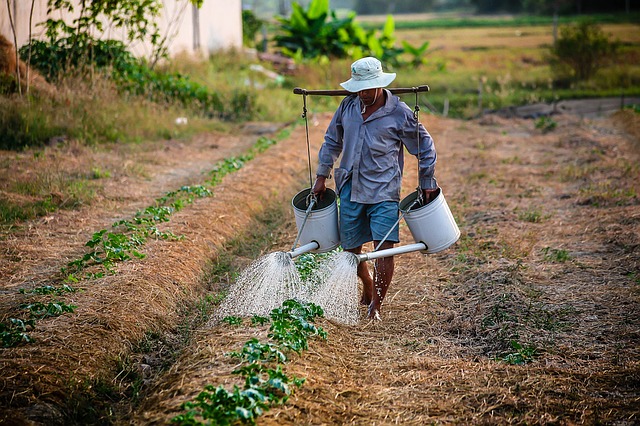
Cucumber plants require consistent watering to maintain healthy growth. They need at least 1 inch of water per week, either from rainfall or irrigation. It’s important to water the plants deeply and evenly to ensure that the water reaches the roots.
2. Sunlight
Cucumber plants require full sun to grow and produce fruit. They need at least 6-8 hours of direct sunlight each day. If your garden doesn’t receive enough sunlight, consider growing cucumbers in containers that can be moved to a sunnier spot.
3. Mulching
Mulching around cucumber plants helps to conserve moisture in the soil, suppress weeds, and regulate soil temperature. Use organic mulch, such as straw or leaves, and apply a layer about 2-3 inches deep around the base of the plants. Be careful not to cover the stems or leaves of the plants with the mulch.
4. Fertilizing
Cucumber plants require regular fertilization to maintain healthy growth and fruit production. Use a balanced fertilizer, such as 10-10-10, and apply according to the package instructions. Be careful not to over-fertilize, as this can lead to excessive foliage growth at the expense of fruit production.
5. Pest and Disease Control
Cucumber plants are susceptible to a variety of pests and diseases, including cucumber beetles, powdery mildew, and bacterial wilt. Monitor your plants regularly for signs of damage or disease, and take appropriate measures to control the problem.
Consider using natural pest control methods, such as companion planting or insecticidal soap, to avoid the use of harsh chemicals. By following these simple care guidelines, you can ensure that your cucumber plants remain healthy and productive throughout the growing season.
Managing Pests and Diseases
Cucumbers in North Florida are prone to a variety of pests and diseases that can impact their growth and yield. Proper management is essential to keep these problems under control and ensure a successful harvest.
Pests
Cucumber beetles are a common pest that can cause significant damage to cucumber plants. They feed on the leaves, stems, and fruits, and can transmit bacterial wilt disease. Other pests that can affect cucumbers include aphids, spider mites, and whiteflies.
To manage pests, it is essential to monitor the plants regularly and take action as soon as you notice any signs of infestation. Some effective control measures include:
- Applying insecticidal soap or neem oil
- Using row covers to prevent pests from accessing the plants
- Introducing beneficial insects such as ladybugs and lacewings
Diseases
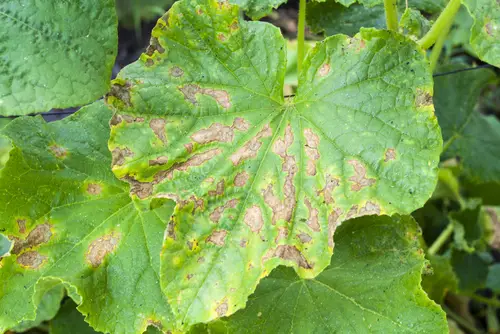
Cucumbers are also susceptible to various diseases, including mildew and powdery mildew. These fungal diseases can cause leaf yellowing, wilting, and premature fruit drop.
To prevent the spread of diseases, it is crucial to keep the plants dry and well-ventilated. Avoid overhead watering and space the plants appropriately to allow for good air circulation. Fungicides may also be necessary in severe cases.
In addition to the above measures, it is important to practice good garden hygiene. Remove any infected plant debris and avoid planting cucumbers in the same location for several years in a row.
By taking these steps, gardeners in North Florida can effectively manage pests and diseases and enjoy a bountiful cucumber harvest.
Harvesting and Storing Cucumbers
Cucumbers are ready to harvest when they reach a mature size and green color. The ideal size for slicing cucumbers is 6 to 8 inches long, while pickling cucumbers should be harvested when they are 2 to 4 inches long.
Larger pickling cucumbers can be harvested when they are 6 to 7 inches long. Lemon cucumbers should be harvested just before they turn fully yellow. A yellow lemon cucumber will be seedy. It is important to pick cucumbers when they are ready to avoid a bitter flavor that develops in cucumbers that are left on the vine too long.
To harvest, gently twist the cucumber off the vine or use a pair of scissors or pruning shears to cut the stem. Be careful not to damage the vine or other cucumbers on the plant. Harvesting regularly will encourage the plant to produce more cucumbers.
After harvesting, cucumbers can be stored in the refrigerator for up to a week. To extend their shelf life, cucumbers can be pickled or canned. Pickling cucumbers are perfect for making pickles, while slicing cucumbers are great for salads and sandwiches.
To store cucumbers for a longer period, they can be preserved by salting. Layer the cucumbers, onions, and one to two tablespoons of salt in a bowl or baking pan, starting with the cucumbers, then adding salt and onions, and repeating.
Cover the mixture with plastic wrap and let it sit at room temperature for at least a couple of hours. Rinse to remove the salt, then return the vegetables to the bowl.
Companion Planting with Cucumbers
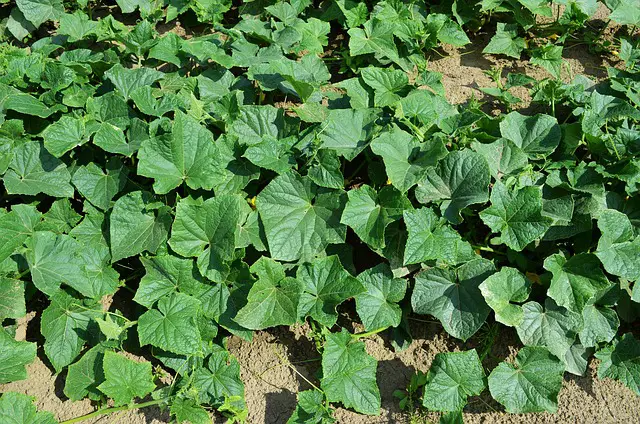
When it comes to companion planting with cucumbers, there are a few things to keep in mind. By planting certain vegetables, flowers, and herbs alongside cucumbers, gardeners can create a more biodiverse garden, improve pest control, and even enhance the flavor of their cucumbers.
One important thing to keep in mind is that cucumbers should not be planted near members of the nightshade family, such as tomatoes and peppers. This is because they can attract the same pests and diseases, such as the cucumber beetle and powdery mildew.
On the other hand, there are several vegetables that make great companion plants for cucumbers. These include:
- Squash: Squash and cucumbers are both members of the Cucurbitaceae family, and they can help deter pests like squash bugs and cucumber beetles when planted together. Plus, they both have similar growing requirements, making them a good match.
- Lettuce: Lettuce makes a great companion plant for cucumbers because it grows quickly and can help shade the soil, keeping it cool and moist. This is especially important in hot climates like Florida.
- Corn: Corn can provide some natural support for cucumbers to climb, and the tall stalks can also help shade the cucumbers from the hot sun.
- Pumpkin: Like squash, pumpkin is another member of the Cucurbitaceae family that can help deter pests when planted with cucumbers. Plus, the large leaves can help shade the cucumbers from the sun and keep the soil moist.
In addition to vegetables, there are also several flowers and herbs that make good companion plants for cucumbers. These include:
- Marigolds: Marigolds are known for their ability to repel pests like aphids and nematodes, making them a great companion plant for cucumbers.
- Nasturtiums: Nasturtiums can help repel cucumber beetles and other pests, and they also attract beneficial insects like ladybugs and hoverflies.
- Dill: Dill is a great herb to plant near cucumbers because it can help repel pests like aphids and spider mites. Plus, it can enhance the flavor of cucumbers when used in pickling.
When planting companion plants with cucumbers, it’s important to keep in mind the spacing requirements for each plant. For example, squash and pumpkins need plenty of room to grow, so they should be planted at least 3-4 feet away from cucumbers. On the other hand, lettuce and herbs like dill can be planted closer together.
Additional Resources
For more information on when to plant cucumbers in North Florida, there are several resources available online. Here are a few:
- The North Florida Vegetable Gardening Guide provides comprehensive information on vegetable gardening in North Florida, including when to plant cucumbers. According to the guide, North Florida gardeners can plant cucumbers from February to April, and then again in July and August. The guide also provides information on site selection, insects and biodiversity in the garden, soil testing, composting, cover crops in the garden, irrigation, and more.
- FL Gardening provides information on growing cucumbers in Florida, including planting times and varieties. The website recommends planting cucumbers in the spring after the danger of frost has passed, and taking advantage of the fall planting season by sowing again in late summer. The website also provides information on different cucumber varieties that are suitable for growing in Florida.
- Gardening Solutions from the University of Florida’s Institute of Food and Agricultural Sciences provides information on planting and caring for cucumbers. The website recommends planting cucumbers in the spring after the danger of frost has passed, and sowing again in late summer. The website also provides information on selecting and preparing a site for planting, fertilizing, pest management, and harvesting.
- The University of Florida’s Electronic Data Information Source (EDIS) provides information on greenhouse cucumber production in Florida. The website provides information on the required growing conditions for greenhouse cucumber production, as well as information on different cucumber varieties, planting, fertilizing, pest management, and harvesting.
By consulting these resources, North Florida gardeners can ensure that they are planting cucumbers at the appropriate time and taking all necessary steps to ensure a successful harvest.
Frequently Asked Questions
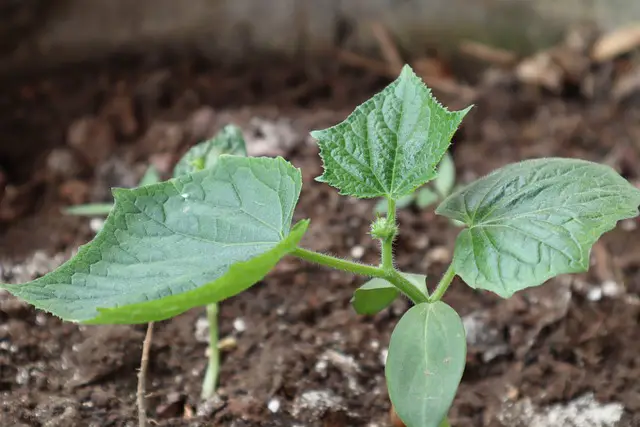
What are the best cucumber varieties for North Florida?
The best cucumber varieties for North Florida are Bush Slicer, Cherokee, Dasher II, Eureka, and Sweet Success.
When is the ideal time to plant cucumbers in pots in Florida?
The ideal time to plant cucumbers in pots in Florida is during the spring after the danger of frost has passed, which is generally from February to April.
Can cucumbers be grown year-round in Florida?
Cucumbers can be grown year-round in Florida, but the best time to plant them is during the spring and fall. Gardeners in North Florida can plant cucumbers from February to April, and again in July and August.
What is the best month to plant squash in North Florida?
The best month to plant squash in North Florida is from March to August.
What are the easiest types of cucumbers to grow in Florida?
The easiest types of cucumbers to grow in Florida are bush cucumbers, which are compact and don’t require trellising, and pickling cucumbers, which are small and can be harvested early. Some popular varieties include ‘Boston Pickling’ and ‘Straight Eight’.
When is the latest time to plant cucumbers in North Florida?
The latest time to plant cucumbers in North Florida is in August. This will allow the cucumbers to mature before the cold weather arrives.

Hey, I’m Lisa and I’ve been an avid gardener for over 30 years. I love writing, talking and living in the garden! Feel free to connect with me on my socials below


